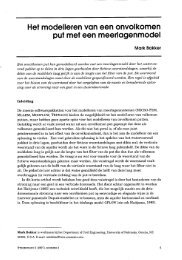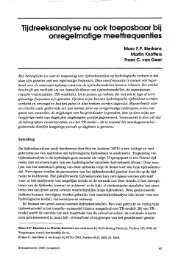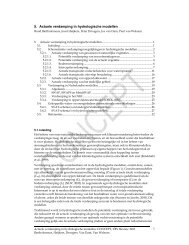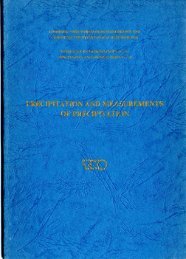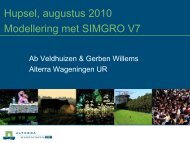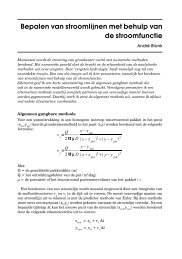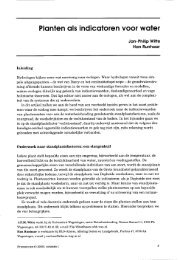Hydrochemistry and energy storage in aquifers - NHV.nu
Hydrochemistry and energy storage in aquifers - NHV.nu
Hydrochemistry and energy storage in aquifers - NHV.nu
Create successful ePaper yourself
Turn your PDF publications into a flip-book with our unique Google optimized e-Paper software.
The heterogeneous reactions of Si02 generally <strong>in</strong>volve an activated complex; the dissolution<br />
reactions are zero-order whereas precipitation is first-order with regard to dissolved silica<br />
(Rimstidt <strong>and</strong> Barnes, 1980; Bird et al., 1986) (see Equations 4 - 7).<br />
where the * <strong>in</strong>dicates the activated complex.<br />
The slower rate of precipitation as opposed to dissolution has led to the widespread use of<br />
dissolved Si as a geothermometer (Fournier <strong>and</strong> Rowe, 1966; Arnorsson, 1975) of water<br />
temperatures at depth <strong>in</strong> geothermal exploration. This reaction rate differential m<strong>in</strong>imizes<br />
Si02 scal<strong>in</strong>g.<br />
3.4 Temperature dependent modell<strong>in</strong>g<br />
Scal<strong>in</strong>g is to be avoided <strong>in</strong> ATES systems because it results <strong>in</strong> <strong>in</strong>creased ma<strong>in</strong>tenance costs<br />
<strong>and</strong> decreased efficiency. Similarly, unnecessary capital costs for treatment should be<br />
avoided. The avoidance of scal<strong>in</strong>g requires that saturation <strong>in</strong>dices for pert<strong>in</strong>ent m<strong>in</strong>erals be<br />
calculated with a significantly greater reliability than is normally required by geochemists<br />
<strong>and</strong> environmental chemists for <strong>in</strong>terpretative studies. Therefore, a major aspect of the U.S.<br />
contribution to Annex VI of the International Energy Agency collaborative research has<br />
been focused on this problem. Solid solution modell<strong>in</strong>g of carbonates <strong>and</strong> ATESgroundwater<br />
mix<strong>in</strong>g models have already been mentioned. The <strong>in</strong>itial effort was to improve<br />
the temperature competence of our geochemical modell<strong>in</strong>g (Smith, 1988). Calculation of<br />
saturation <strong>in</strong>dices can be no more reliable than the aqueous speciation calculations on which<br />
they are based. However, thermodynamic data are conventionally determ<strong>in</strong>ed at 25°C <strong>and</strong><br />
require adjustment for use at higher temperatures. These adjustments can be estimated with<br />
the Van 't Hoff relationship but this estimation procedure often leads to significant error at





